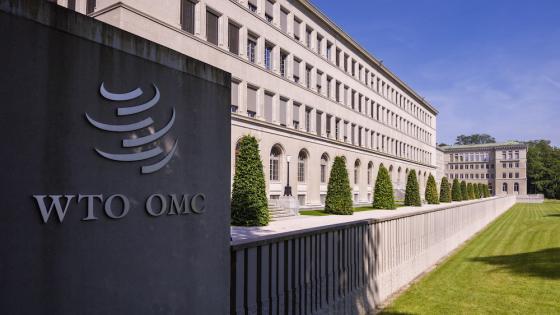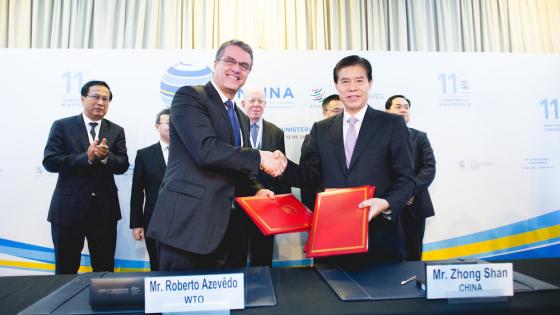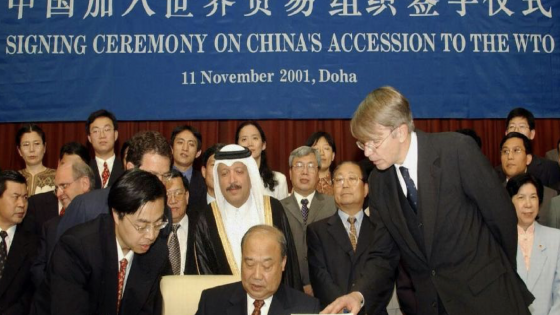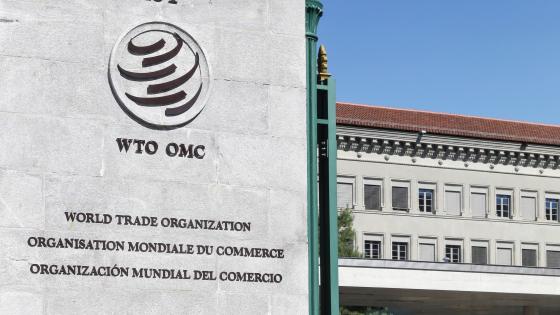Editor's note: This is the final column in a three-part series on China and the WTO. Read the first two columns here and here.
In the first part of this three-part series, we argued that WTO members had high expectations that by admitting China into their midst, its economic system would gradually converge to the liberal economic system, which has been implicit in the GATT and then the WTO agreements. In the second part, we saw that many of China’s trading partners, in particular the US and the EU, feel that China has not lived up to their expectations.
This is a clear case of cognitive dissonance. China never committed to becoming a ‘market economy’ when it joined the WTO. It only promised to become a ‘socialist market economy’. The Western countries and the WTO membership in general only paid attention to the words ‘market economy’. But for the Chinese, the word ‘socialist’ was equally important. China’s constitution is very clear about this. Article 6 states that: “The foundation of the socialist economic system of the People’s Republic of China is socialist public ownership of the means of production, that is, ownership by the whole people and collective ownership by the working people… In the primary stage of socialism, the state shall uphold a fundamental economic system under which public ownership is the mainstay and diverse forms of ownership develop together”.
It was not really a surprise, therefore, that President Xi has moved towards re-invigorating the role of the state, rather than retracting it. And he had, and still has, little incentive to do otherwise. China, as is, has been outperforming other big advanced and emerging economies for some time. And not only that. China weathered the 2007-2008 Global Crisis much better than others. The same holds for the Covid-19 crisis. According to the IMF’s April 2021 WEO database, China’s GDP will reach 117% of its 2019 level in 2022, while the US will only reach 106% and the EU 102% of their 2019 levels. China emerged from the Global Crisis as good as (and probably even better than) anyone else. So, why change?
Not that a serious regime change was ever on the cards. Chairman Deng excoriated Gorbachev’s decision to dissolve the party, since he always thought that its role was crucial in directing state affairs. And the reduction of state was more a question of corporatisation of (former) state assets, rather than privatisation – especially as understood in the Western world. As a result, the world trading community is now stuck with a legal framework that is hardly appropriate to take care of the concerns that emerge. Yet, as we argue in Mavroidis and Sapir (2021), this does not necessarily mean that no progress is possible in trying to bridge the gap between the Chinese and the WTO systems.
The parameters
The word trading community should be under no illusions as to what can be achieved. China will not change its economic regime and overall approach by legislative fiat or through an edict decided in Geneva. What the multilateral regime can do is ‘tweak’ a few key institutions, which will facilitate access to China’s market and increase the relevance of the WTO framework in Beijing.
In doing this, the trading community should not repeat the mistakes of the past. There is no reason to believe, if there ever was one, that a relational contract full of gaps will function as expected. The WTO membership’s heterogeneity would argue against similar expectations. This is the time of explicit contracting. Wu (2016) correctly underscores the capacity of China to evade its disciplines. It is equally true though that the biggest victories against China were scored in the areas where contractual expression had been quite clear. It is the time of action. Contrary to Rodrik’s (2018) suggestion, the world trading community cannot stay idle.
This ‘do-nothing’ approach implies that problems perpetuate. It is also a-historical. The GATT/WTO was not designed to accommodate each and every state on earth, irrespective of its regime choice. The liberal understanding permeated the agreed text. Indeed, its key institutions cannot function properly, absent acknowledgement of the liberal understanding. At the same time, it is true that neither the GATT nor the WTO agreements ever made explicit their implicit liberal understanding. Contrary to the EU (which added accession criteria – the Copenhagen criteria – to prepare for the accession of the former socialist countries of central and eastern Europe), the GATT/WTO agreements contain no such criteria.
The world trading community would be well-advised to avoid repeating unilateral reactions as seen during the Trump Administration. We now know, thanks to the work of Amiti, et al. (2019) and Bown (2021), that not only China did barely flinch, but that it is the US economy that had to suffer the bulk of the cost of the unilateral increase in tariffs. And of course, the Phase One US-China agreement did not solve the ‘China problem’, nor did it reduce the US trade deficit with China. The agreement also risks being outlawed by a WTO panel.
So, what can be done?
The world trading community needs to come together and ‘complete’ the contract. Bilateral solutions like the US-China deal or the EU-China Comprehensive Agreement on Investment (CAI) may help a bit but will not solve the problem because of the nature of what is at stake: subsidies, especially, require a multilateral approach.
In doing this, the world trading community would be well-advised to mimic existing successful examples. Both the Comprehensive and Progressive Trans-Pacific Partnership (CPTPP, the successor to the TPP signed under Obama but rejected by Trump) as well as the US-Mexico-Canada Agreement (USMCA, the successor to the North-America Free Trade Agreement, NAFTA) contain detailed chapters regarding the disciplining of state-owned enterprises (SOEs) and forced technology transfers – the two biggest irritants to trade and investment relations with China (see part two of this series). For ‘Realpolitik’ reasons as well, this is a commendable approach: why attempt to re-invent the wheel, when solutions that meet the approval of a substantial percentage of the WTO membership already exist? The good news is that China has already agreed on some of this discipline in its bilateral investment agreement (the CAI) with the EU, as Dadush and Sapir (2021) explain.
With this in mind, we would like to advance two proposals for WTO reforms. The first concerns SOEs, of which only a small subset (state-trading enterprises (STEs)) are covered by the WTO Agreement. The new text should make it clear that all SOEs (including, but not exclusively, STEs) are presumptively ‘public bodies’ (reversing the burden of proof in subsidies disputes) and must act in accordance with ‘commercial considerations’.
Second, for foreign direct investment involving joint ventures, WTO signatories (China included) should be constrained not to enforce contracts between domestic and foreign firms that oblige the foreign investor to transfer technology to its domestic partner against its wishes.
If these propositions were agreed at the multilateral level, a substantial part of today’s complaints against China would subside.
But every silver lining has a touch of grey
For all this to happen of course, all the main WTO players (China included) must agree to participate in WTO negotiations. The question is how to bring this about politically. The January 2020 Joint Statement of the Trilateral (Japan, the US, and the EU) showed that trade distorting policies and practices by China pose challenges to many nations, and that cooperation is possible. As argued by Baldwin et al. (2020), calls for a structured dialogue with China will be required down the road. China has profited enormously from its participation in the WTO. The cost of non-WTO – as may happen if the ‘China problem’ continues to poison the atmosphere at the WTO – would be felt in Beijing probably even more than elsewhere. China should have an incentive, therefore, to act as a ‘responsible stakeholder’ – a concept already put forward the then US Deputy Secretary of State Robert Zoellick in 2005 (Zoellick (2005). Crises usually go in tandem with opportunities. And this current crisis is no exception.
References
Amiti, M, S J Redding and D Weinstein (2019), “The Impact of the 2018 Trade War on US Prices and Welfare”, NBER Working Paper 25672.
Baldwin, R E, C Bown, J Fried, A Gonzalez, A Sapir and T Watanabe (2020), “Getting America Back in the Game: A Multilateral Perspective”, A Tacit Project Paper, Geneva Trade Forum.
Bown, C (2021), “Anatomy of a flop: Why Trump's US-China phase one trade deal fell short”, Peterson Institute of International Economics.
Dadush, U and A Sapir (2021), “Is the European Union’s investment agreement with China underrated?”, Bruegel Policy Contribution 09/21.
Mavroidis, P C and A Sapir (2021), China and the WTO: Why Multilateralism Matters, Princeton, NJ: Princeton University Press.
Rodrik, D (2018), “The Double Standard of America’s China Trade Policy”, Project Syndicate, 10 May.
Wu, M (2016), “The ‘China Inc.’ Challenge to World Trade Governance”, Harvard Journal of International Law 57: 261–324.
Zoellick, R B (2005), “Whither China? From Membership to Responsibility”, Remarks to the National Committee on US-China Relations, 21 September.



